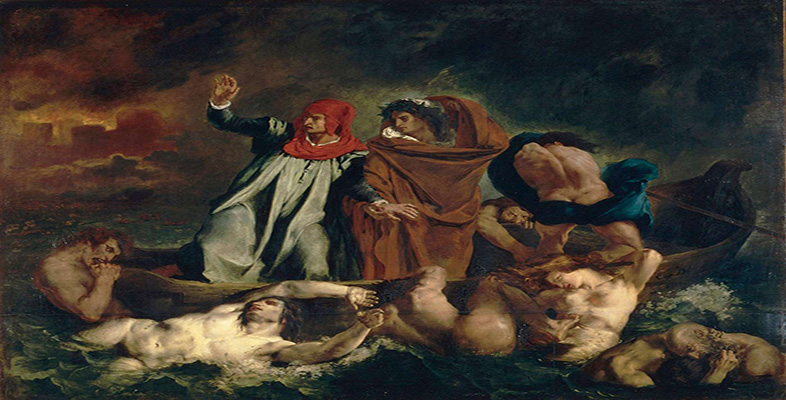2.3 A passionate reaction
The painting provoked a furore because both its subject and the manner in which it was painted were felt to be excessive: this delirious orgy, playing on Byronic notions of fieriness and Faustian concoctions of creative and destructive energies, was not what critics and public had come to expect of grand history painting. Its massive size (just under four by five metres) magnified its effect. In fact, the painting had only narrowly been voted into the exhibition by the Salon jury. The following critique, by Étienne-Jean Delécluze, a former pupil of David, was typical:
M. Delacroix’s Sardanapalus found favour neither with the public nor with the artists. One tried in vain to get at the thoughts entertained by the painter in composing his work; the intelligence of the viewer could not penetrate the subject, the elements of which are isolated, where the eye cannot find its way within the confusion of lines and colours, where the first rules of art seem to have been deliberately violated. Sardanapalus is a mistake on the part of the painter.
(Quoted in Jobert, 1998, p.83)
Most assessments, like this one, slated the painting’s lack of compositional logic and its riot of colour. Delacroix was said to be ‘hotheaded’; his work had gone ‘beyond the bounds of independence and originality’; in the ‘delirium of his creation’ he had been carried ‘beyond all bounds’; ‘almost unanimously the spectators find it ridiculous’ (from reviews quoted in Jobert, 1998, pp.81–3). The Director of Fine Arts summoned Delacroix in order to tell him that if he wished to receive future government commissions (which were, in any case, relatively rare in restoration France) he would have to alter his style: the government refused to purchase the work. The painting remained unsold until 1846, when it was bought by a banker, John Wilson.
Let’s look now at the causes of the widespread antipathy to this painting, a ‘mistake’ that would motivate Delacroix, in the remainder of his career, to be better understood.
